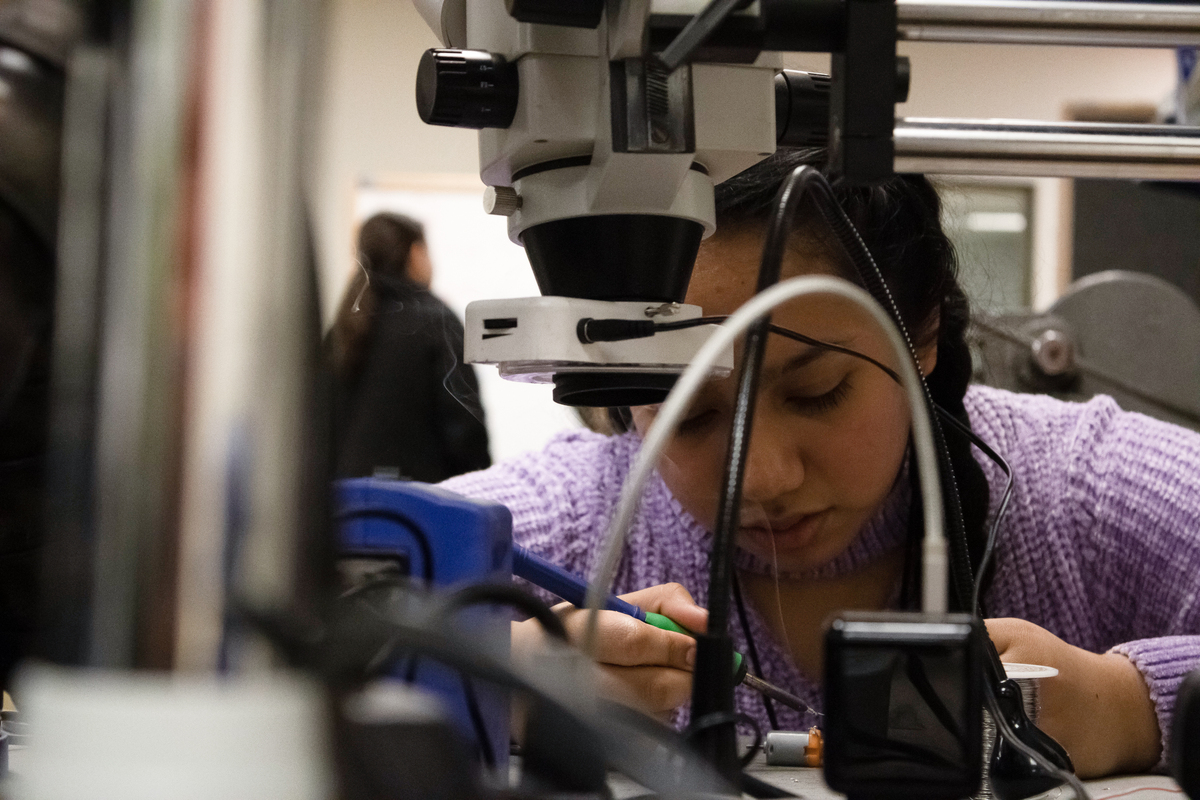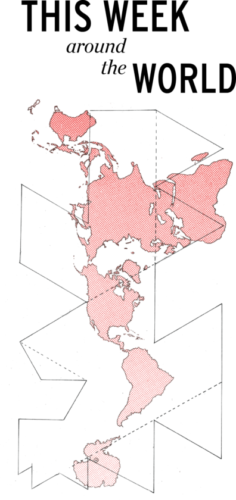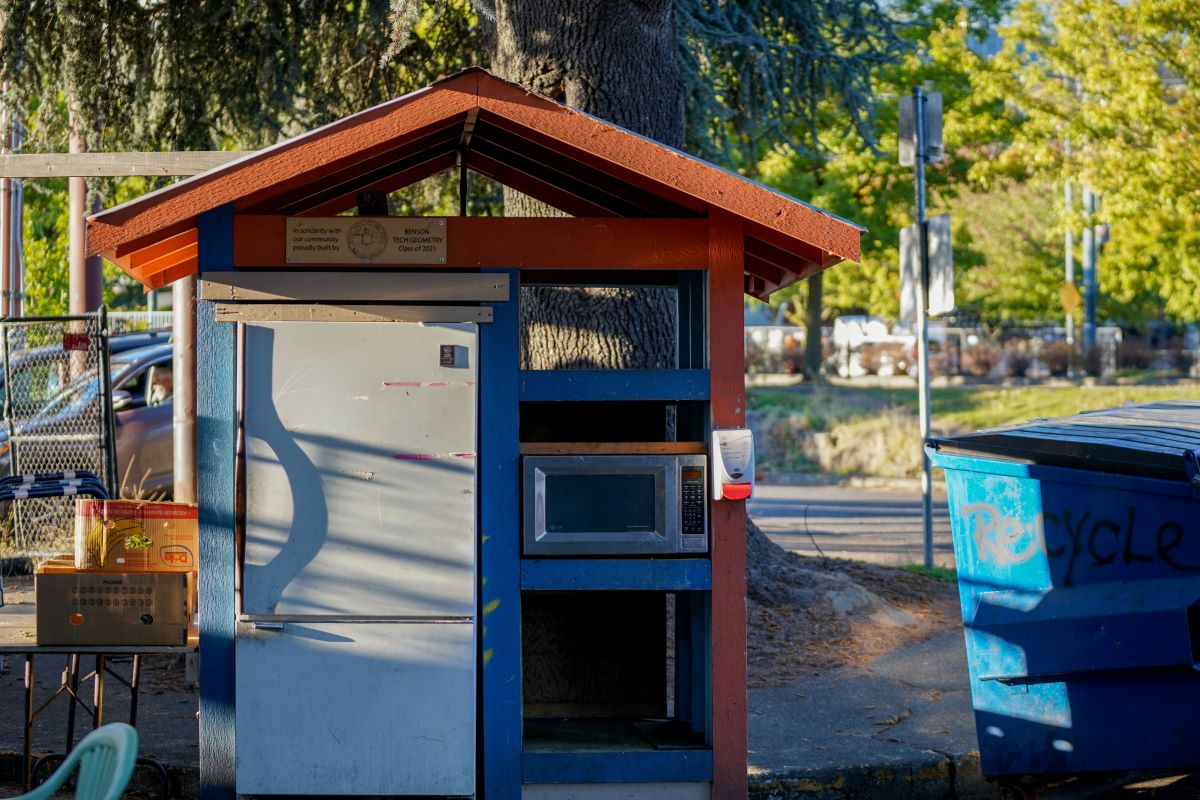Portland State participated with 40 universities across 16 countries to create solutions to some of humanity’s greatest problems.
The PSU Center for Entrepreneurship hosted Invent for the Planet 2020 from Feb. 14–16 in the Fariborz Maseeh Engineering and Computer Science Building. The event was in collaboration with Texas A&M, who designed the program.
“[Texas A&M] crowdsourced 14 need statements,” said Juan Barraza, director of student innovation at the Center of Entrepreneurship. “14 problems around the globe that need to be solved.”
According to Barraza, this is the second year PSU has participated in the event.
PSU students and non-students of any background or education were welcome to participate in the event. Participants were put in groups based on which need statement they wanted to work on. Over the weekend, groups were tasked with designing a solution to their need statement and creating a prototype of that solution to present in front of a panel of judges. The first place team’s presentation is sent to Texas A&M for a chance to be selected to compete as one of the top five teams from one of the 40 universities participating.
Friday, Feb. 14, 2020
Just after 5 p.m., following a quick presentation and some free pizza, the newly formed groups of innovators filed into the electronics prototyping lab (EPL): an engineering and computer science workspace with tools, 3D printers, oscilloscopes, soldering irons, lasers and a wazer—a water-jet laser used to cut metal.
The EPL tables and workbenches were littered with pens, notebooks and computers as the groups delved into researching their chosen problem.
According to the need statement information, “68% of the world’s population will live in urban areas by the year 2050,” and so, one group chose to find carbon reducing opportunities in city environments. Group members began the night by toiling with problems facing carbon reduction such as the duck curve—a well-known power production imbalance between a city’s peak demand of energy in a day and renewable energy production—and missed opportunities in utilizing resources.
“Where’s value going down the drain?” asked PSU student Sean Krivonogoff regarding the missed opportunities. Krivonogoff participated in last year’s Invent for the Planet, in which his group took first place at PSU.
Addressing the problem of access to clean water in rural areas, his group designed a device that boiled water over a stove to create steam then—using the peltier effect, a way to use electrical energy for cooling—condensed the steam into purified water.
A different group sought to innovate smart cities: metropolitan areas with digital amenities such as cloud services and ride-share apps. Through their research, the group discovered by improving the smart city capabilities of public transportation, they could also help reduce carbon emissions.
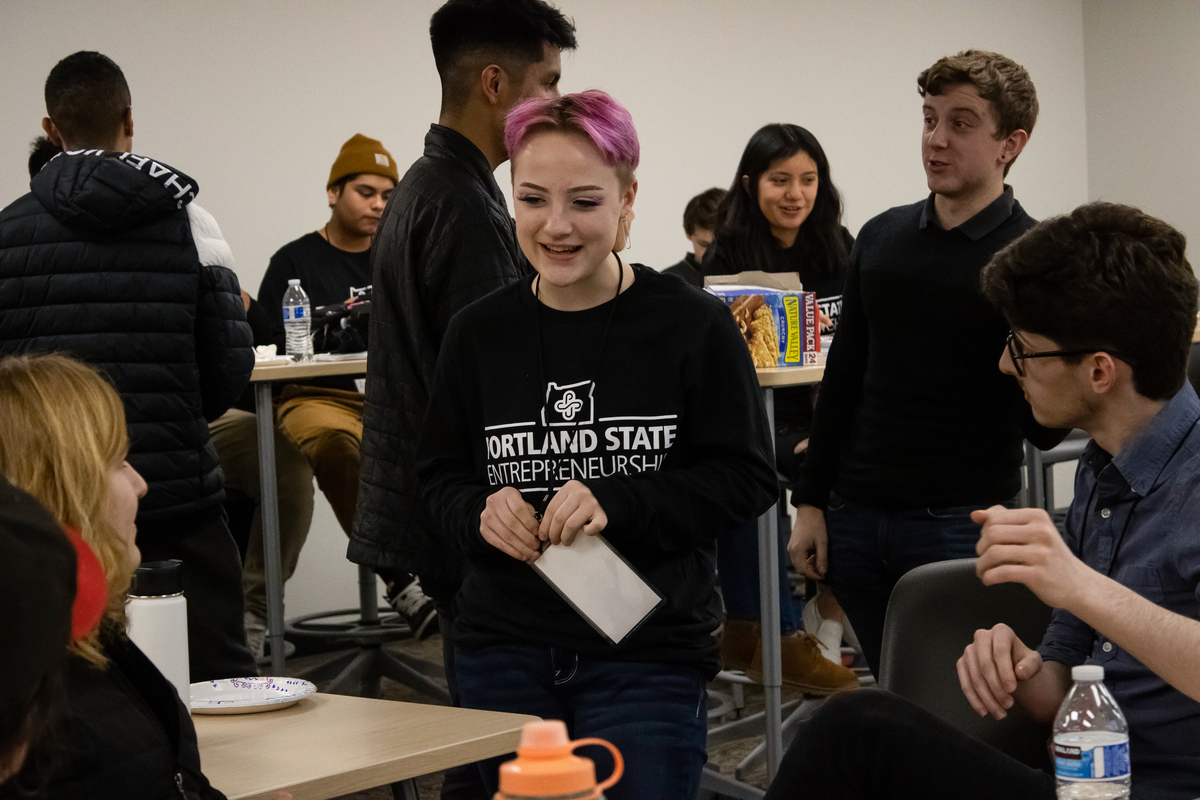
“It’s very time consuming,” said Lily Strayer, a student at Douglas McKay High School and smart city group member. “What might take five minutes in a car takes 30 minutes on the bus.”
The group decided on finding a way to aggregate data from commuters to incentivise public transportation by reducing cost, creating greater accessibility and reducing wait times to below 10 minutes.
In 2017, four Douglas Mckay students in the mathematics engineering science achievement (MESA) program finished first place in PSU’s Cleantech Challenge—a similar design event to Invent for the Planet. The students designed a way to turn lunchroom plastics into filament for 3D printers. Douglas McKay High School has since become a magnet school for students looking to study engineering.
As of Feb. 12, the coronavirus (COVID-19) outbreak has infected nearly 45,000 people across 25 countries, according to the need statement information. A third group brainstormed ideas of a social media campaign geared to disseminating information on how to best detect, prevent and mitigate the spread of COVID-19. The group continued their research, hoping to shed light on similarities between COVID-19 and past viruses such as the type A flu to discover ways to stymie the pandemic.
The final two groups, each comprised of Douglas McKay students, outlined potential solutions for their respective problems: How to create a more seamless travel experience for airline passengers and how to meet growing energy demands with an emphasis on sustainability.
Around 9:30 p.m., the groups disbanded for the evening and vacated the EPL. As Invent for the Planet paused for the night in Portland, students at Habib University in Karachi, Pakistan were already working on Saturday morning to find solutions to similar need statements.
Saturday, Feb. 15, 2020
Groups were back at the Maseeh Engineering and Computer Science building at 8 a.m. for free breakfast and coffee before picking up their work right where they left off.
The schedule for Saturday differed from the previous day as each group pitched their conceptual solutions in a series of mentor sessions. Each session was meant to aid in a group’s design process by raising questions about their solution and giving professional insight.
Chris Clark, program manager for EPL and PSU graduate student studying computer engineering, was a technical mentor, advising on the availability and feasibility of certain technologies that groups wanted to implement in their solution. As a group pitched their ideas, Clark explained readily available technologies through whiteboard sketches, ranging from the potentiality and ethics of acquiring public transportation data to the capabilities of GPS.
Clark has also done work with the MESA program and with introducing students in low-income communities to STEM programs. “I love what they’re doing,” Clark said, referring to the Douglas McKay students participating in the event.
Following the technical mentor session, groups transitioned to a session with Dr. Kelly Cowan, PhD in engineering technology management and professor at PSU. Cowan’s insight narrowed in on the business aspect of a group’s solution: how to incentivise the idea, how to identify a market, how to identify capital issues and how does this product differ from those already available in the market.
Cowan’s business ideas not only considered a solution’s feasibility but also its impact on the world. “Everybody has to look through the lens of sustainability,” Cowan said in an interview.
The third mentor was Dr. Kanika Agrawal, PhD in electrical engineering and employee for a subsidiary of the Japanese conglomerate Hitachi. Agrawal assisted groups in taking their ideas and focusing them into solutions with specificity, filling a niche market.
“You have a lot of great ideas,” Agrawal said to the carbon reduction group. “But they’re still at the 50,000 foot view.”
After receiving feedback from their mentors, some groups left with more questions than answers, such as the smart city group who felt as though they had hit a barrier but were undeterred and continued to pursue utilizing big data to improve public transit.
For others, the critical feedback provided clarity: “I think it did help a lot, because we’re more sure of what our project is,” said Lizbeth Mayoral Rodriguez, a Douglas McKay student and COVID-19 group member. “Before we thought it was going to be an Instagram account, but now we’re certain it’s gonna be an app.”
Mayoral Rodriguez’s group pivoted away from a social media campaign to a mobile app that provides a real-time, interactive map of known virus outbreaks in a user’s area, among other pertinent COVID-19 information.
“We were kind of lost,” said Juan Munguia Gutierrez, a seamless air travel group member and Douglas McKay student, about going into the mentor sessions. “And we were going in a direction we didn’t want to go to.”
“[The mentors] were kind of hard on us, asking a lot of questions and really testing us,” Munguia Gutierrez continued. “They really helped us.” The seamless air travel group set their sights on a mobile app designed to assist airline passengers in navigating through unfamiliar airports using text to speech technology, specifically for those passengers facing language barriers.
The energy demand and sustainability group’s designs for a hybrid airplane were met with some skepticism by mentors. But after some deliberation, they decided to move forward with the idea.
Their hybrid airplane design involves repurposing a pre-existing emergency system: “[Planes] have a thing called a RAT—a ram air turbine—which kicks open and starts spinning and that generates power,” said Misael Torres, a Douglas McKay student. “What if we repurpose it…and use it to power the cockpit.” The group’s research leads them to think their design could eliminate power consumption in airplanes by 10–15%.
For the carbon reduction group, Saturday afternoon was spent bouncing from different carbon reducing opportunity ideas: alternative heating and cooling systems in apartment buildings, solar powered window shades and urban moss walls. But each idea suffered issues of feasibility, practicality and overall effectiveness which led the group to abandon carbon reduction entirely and switch their focus toward finding innovative parenting solutions. To make matters worse, a member became ill and had to drop out of the competition.
The former carbon reduction group, now innovative parenting group, decided to design a mobile app called “Sitter Swipe”: a last minute babysitter service with swipe-based features similar to that of the popular dating app Tinder.
The second half of the day was dedicated for groups to create a prototype of their design. After more than 12 hours of work, Invent for the Planet once again had shut down for the night in Portland as innovation moved on to another part of the world.
Sunday, Feb. 16, 2020
It was another early start and free breakfast on Sunday morning, the final day of the event. Groups scrambled to polish their presentations for the judges as well as finalized any fabrication needed for their prototypes. Taped to walls and spread over tables, sheets of white poster paper were scribbled with notes, outlines and design layouts in thick marker.
The smart city group tested its prototype infrared sensor—a device they planned to one day implement on public transportation as an electronic turnstile. The sensor’s purpose was to collect passenger arrival and departure data in an effort to optimize public transit locations.
The groups seamless air travel, innovative parenting and COVID-19 all refined the look and design of their respective mobile apps. Each digital prototype displayed a user interface—displaying what an app’s pages would look like—as well as showed the core functionalities available to the user.
A brief panic ensued for the energy demand and sustainability group as their prototype hybrid airplane failed to function. The prototype was a model plane with a row of small lights wired to a computer fan. The fan represented an airplane’s RAT which, when blown with compressed air, created an electrical current, supplying power to the little model plane’s cabin lights. But, despite functioning Saturday afternoon, the lights were not illuminating.
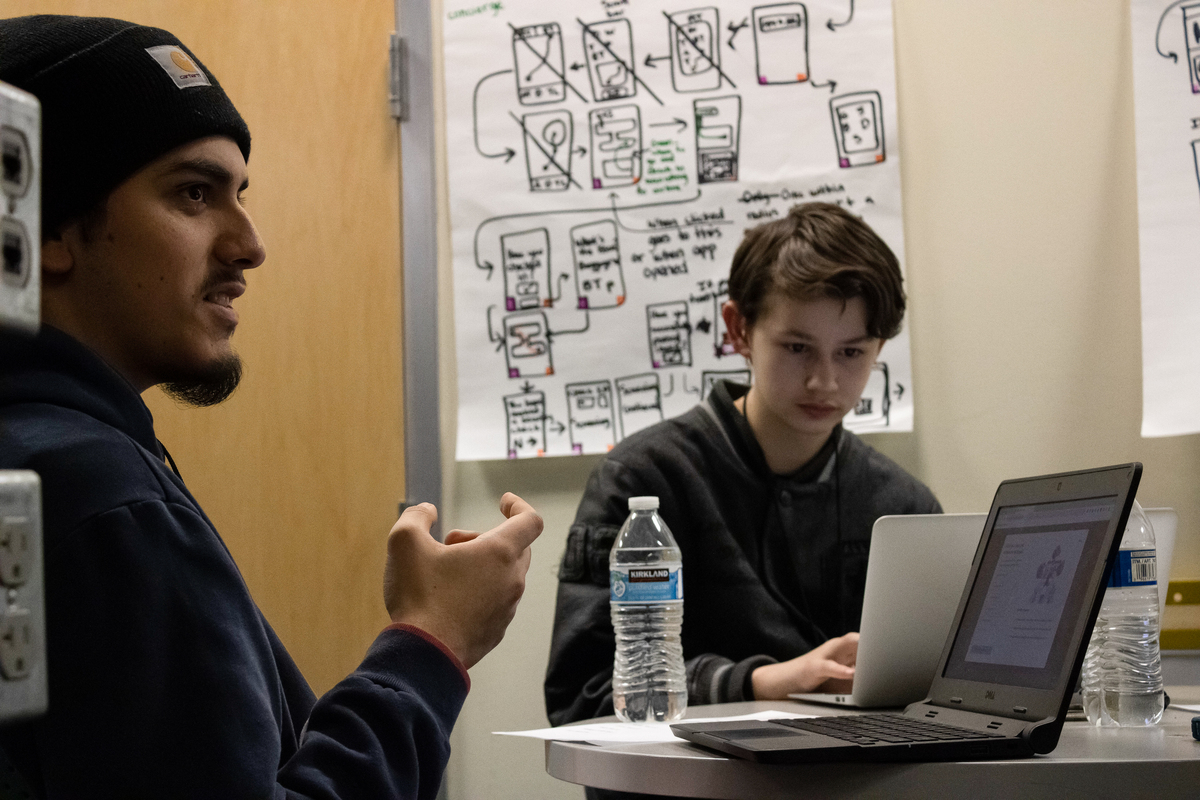
It was only after some troubleshooting and the quick solder of a few wires that the problem was fixed and the panic subsided.
Groups ran through practice presentations before and after lunch, each making their own mistakes: stumbling over or forgetting rehearsed lines, stiff postures and awkward closing statements. But feedback was given and improvements were made.
By 2 p.m., every Invent for the Planet participant filled room 93 of Maseeh Engineering and Computer Science building to present in front of the judges.
As they spoke before the judges, each group was poised and enthusiastic about the problem they chose and the solution they designed to address it. Any prior issues groups faced with their prototypes were now nonexistent and each operated without flaw. The energy demand and sustainability group was even able to utilize the EPL’s air compressor to give a live demonstration of their model plane. After the presentations, groups ate dinner while waiting for the judges to make their decision.
After their deliberation, the judges were ready to give the results and shared what they thought each group did well and identified areas that need improvement. As for the groups that placed: energy demand and sustainability came in third, smart cities came in second and seamless air travel came in first.
In an interview after the event, seamless air travel group members were asked if they were ever confident they were going to win after seeing the other groups’ presentations. Jose Ceja, a Douglas McKay student felt confident going into the judge’s decision, saying: “I felt like ours was the only one that wasn’t already made.” Munguia Gutierrez didn’t share his fellow member’s confidence.
For some, Invent for the Planet wasn’t about the competition, but rather an opportunity for growth. Lucas Clark, a PSU student and smart cities group member, said the event was “a good opportunity to come in and test myself.”

